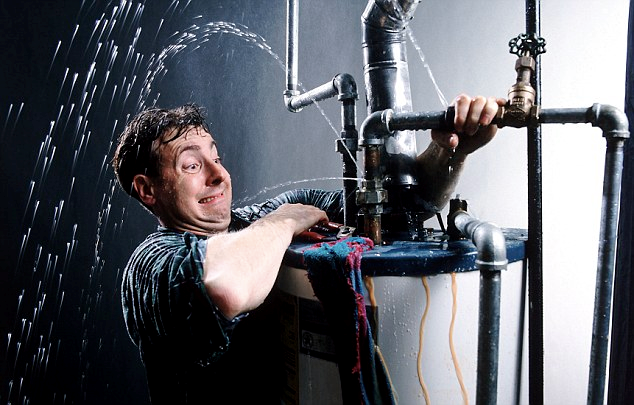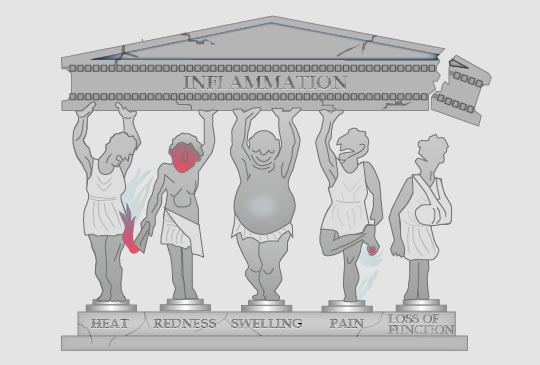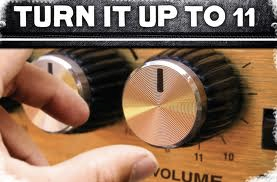Have you ever wondered why sometimes you have a painful or achy body part and you cannot pinpoint why? Or sometimes you have a flare up of an old injury for no particular reason. Sometimes taking an Ibuprofen or Tylenol helps while other times it doesn’t. There’s also the pain that only hurts “when I move like this.” Although the reason things hurt can sometimes be confusing and seem to have no answer, the rationale lies in classification of the symptoms you’re feeling.
All too often I hear of patients having recurring pain that their chiropractor just can’t seem to pinpoint. They get some relief from treatments but the pain is still there and is relatively constant. Or what’s even more upsetting is when I hear of somebody throwing all kinds of medications at their shoulder pain because of an old injury that flares up every time they go throw a baseball. In each of these two instances, we have a case of the patient not being classified properly. Pain of a chemical origin will not get better unless the chemical insult to the body is addressed. Mechanical pain will not get better if all you do is throw chemistry at it (drugs) without addressing the biomechanics of the joint in pain.
Mechanical Pain vs Chemical Pain
One of the first things I try to distinguish when a patient is telling me about their symptoms is to figure out if this is pain of a mechanical nature or if this pain is more chemical in origin. Each patient comes in with a story, and if you listen and pay attention to the story, it becomes very clear whether we are dealing with chemical pain or mechanical pain. Let’s take an example:
The patient says something along the lines of, “I’ve got this shoulder and upper back pain. I’ve avoided lifting weights overhead in the gym because it hurts my shoulder too much. I want to be able to play in my softball league but throwing a baseball has become difficult. It doesn’t hurt all the time, just when I move my arm like this, or like this. I’ve tried taking NSAIDS and it doesn’t really help.”
This screams mechanical pain! We are so predisposed to pop a pain killer because it’s such an easy fix. But what we don’t realize is that in cases of mechanical pain, popping pain killers is like hiring a hairstylist to come to your house and fix your plumbing. You hired the wrong person!
Mechanical pain requires a mechanical means of treatment. Now in cases of acute injury or trauma, there is definitely chemistry at play initially. This chemistry is the inflammation that occurs. When we damage tissue, the inflammatory response is actually a good thing. New blood comes to the area, things in your body called macrophages come in and eat up all the damaged tissue and new blood vessels are formed. Once we get past this stage of healing, we’ve got to rehabilitate the mechanical means by which the injury occurred. This may be through remodeling the damaged area with soft tissue treatments, learning proper biomechanics of joint movement, or properly loading that joint in a certain direction to restore balance. If we keep downing NSAIDS or muscle relaxers, not only are we delaying the healing process, we are ignoring the only treatment that is actually going to make a difference, MOVEMENT!
Chemical pain is a bit tougher to pinpoint and is often an underlying process that can severely delay healing times or prevent you from getting better at all. The classic presentation of pain of chemical origin are the traditional cardinal signs of inflammation: swelling, redness, tenderness, and constant pain. Unlike mechanical pain that can be relatively predictable, chemical pain tends to have a mind of its own. No particular movement hurts but most movements aggravate the pain and the pain tends to stick around even after the painful area stops moving. A big distinguishing factor between chemical and mechanical pain is that with mechanical pain, even though some movements hurt, usually some other movement will make the pain subside. With chemical pain, no joint movement will make the pain go away.
Causes of these types of pain
Mechanical
Now that you know how to distinguish between the two types of pain, the next step is figuring out why its there and what to do about it. Mechanical pain, when not caused by direct trauma or injury, is most often due to faulty joint mechanics. Sometimes it is as simple as a tight joint capsule or muscles around a joint that need to be mobilized. Often times, though, the true cause of mechanical pain is multifaceted. We often lack stability in one area of the body and make up for it with becoming too mobile in another area. This same idea worse in the opposite direction. Sometimes we are too loose in certain joints so we make other joints tight in an attempt to stabilize the body. Since there are many joints and systems at play, your best bet is to find a qualified physician who is well versed in biomechanics and movement analysis. No joint works as a solo artist, so you’ve got to examine the entire orchestra of movement to see where the dysfunction is. Once you’ve found the particular movement that reduces pain in a joint, you’ve got to ensure the rest of the kinetic chain is in order to avoid re-injury.
Chemical pain
Chemical pain tends to be far more complex than mechanical pain. Pain of a chemical origin could be caused by something you are exposed to in the environment, something you are putting on your skin, or most commonly, what you put into your mouth. Our standard American diet has made us one of the most inflammation ridden countries in the world and our bodies are taking a beating because of it. When our bodies process the food we put into our bodies, our system is constantly on a spectrum of inflammation. The more processed, sugary, unhealthy food we put into our bodies, the more inflamed we become. This constant state of inflammation not only causes joint pain and swelling but also has an effect on our internal organs and brains. This is that foggy feeling you have during the day and your body feels heavy and tired. For some reason we’ve grown accustomed to feeling groggy and tired after we eat. THAT’S NOT NORMAL! We should feel energized by the food we eat. The food you put into your body does things to your internal chemistry, why not make it work for you?
So when a patient walks into my office and I suspect their pain is of chemical nature, or even if it is mechanical and there’s underlying chemical pain as well, I know that patient is not going to get better with just movement based treatment. Fixing the diet is an absolute necessity and often times it takes finding out which foods in particular may be causing excessive chemical inflammation. Generally, a dietary modification and a few key vitamins or supplements get you started in the right direction.
The bottom line is that if you are in pain, acute or chronic, it is absolutely necessary for you to determine whether it’s predominantly chemical or mechanical. Everyone lies somewhere on the spectrum of pain and inflammation. One of my mentors gave this great metaphor: Chemical pain is like the volume knob on the radio. You can turn it up or down, but you can never shut the radio completely off with the volume knob. There is always going to be some amount of inflammation in your body, and when controlled, this is not a bad thing. But, if you want to be rid of pain and heal from injuries quicker, you can’t be living life with your volume on full blast.
Author:
Dr. Jeffrey Jones, D.C., C.S.C.S.



